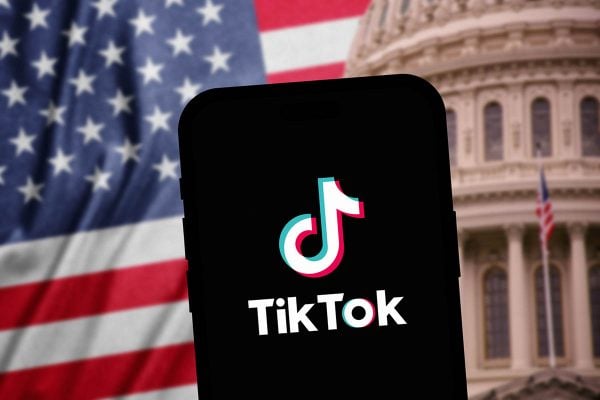With High Street retail suffering its worst downturn probably ever, is online and marketplace commerce really to blame – and if so what is retail going to look like in 20 years time? Sander Roose, CEO of retail pricing and marketing automation specialist, Omnia Retail polishes his crystal ball.
E-commerce continues to be the success story of today’s business landscape. It now accounts for 20%of all retail sales made in the UK; a figure which is growing at 10 timesthe rate of physical store transactions.
However, whilst innovative technology such as mobile and social media shopping currently governs the market, the rapid pace of online retail points to a future of unknowns.
The birth of Google – a company which has ostensibly led the online world for two decades – and the growing dominance of Amazon has opened up huge possibilities for online retailers. But where will we go from here?
Let’s explore some of the potential aspects of online retail in 2039.
Next-level automation
Recent advances in artificial intelligence (AI) and machine learning have quickly become an indispensable asset to retailers, allowing them to collate and analyse huge volumes of data far more efficiently than any human can.
Currently, retailers can use AI-based tools to improve an array of everyday business operations. For example, it can optimise PPC marketing spend and gather information on competitor strategies. Machine learning software can also automate dynamic pricing using factors such as individual commercial strategy, stock level and price elasticity to determine the optimum amount for each product to maintain margins.However, there are many more developments in the pipeline of which the industry is just scratching the surface.
The use of AI tools in business has been the target of consistent negative press, with many criticising the impact that such software could have on employment levels across the UK. However, rather than automating away jobs, AI has the potential to reinvent retail by giving retailers superpowers. It provides them with the additional free time required to grow their business in more “human” ways. For example, with extra free time, retail teams can put more emphasis on customer experience and service – something which is growing in importance every year.
In the future, AI may be used to advise retail category teams in a number of complex ways. For example, it could make adjustments to pricing strategies based on automated analysis of performance data, or even automatically develop and implement new pricing strategies based on each retailer’s specific business goals. We may also see the implementation of personalised pricing, in which the retailer can incentivise and offer discounts to shoppers based on their demographic, purchase history or status as a returning visitor.
The growth of omnichannel experiences
As the number of bricks-and-mortar stores continues to decline, the future of retail will be dictated by brands that can effectively bridge the gap between in-store experience and online transactions.Consumer behaviours are constantly changing and all businesses – large and small – that want to remain successful and retain customers must change to reflect the growth of omnichannel retail.
Omnichannel is an approach that allows businesses to offer a unified experience across all sales points. It’s already being used to great effect by brandssuch as Starbucks and Amazon and we predict it will play an increasingly critical role in the retail landscape over the next two decades.
Currently, this evolution is perhaps best exemplified through the rise of the ROPO (Research Online, Purchase Offline) consumer, who takes an omnichannel approach to buying – essentially researching their goods online, on an “anytime, anywhere” basis, before making the final purchase in-store.
Alibaba’s “New Retail” concept is breaking barriers in omnichannel by seamlessly blending physical and digital experiences. The company’s Hema Xiansheng supermarkets in Shanghai, for example, allow shoppers to purchase either in store or via an app, with options for free delivery or 30-minute collection. Customers can also pay through the app or by facial recognition technology.
But how will omnichannel experiences progress in future?
Death of the smartphone – Mobile has been instrumental in the growth of omnichannel, providing an instant connection to retailers’ product ranges and price tags. However, some have predicted that such devices (in their current form) will become defunct in as little as 10 years’.They may seem convenient now, but physical screens actually create an unnatural barrier between the user and the task they want to carry out. In retail, this ‘task’ will most likely take the form of searching, reviewing and purchasing products, most often executed by tapping or typing.
But the interface itself creates a process filled with friction.Take, for example, the frustration of incorrect predictive spellcheck or the need to remove gloves or put on glasses to use a device. Instead of focusing on the product they intend to buy, users must navigate these physical obstacles; all of which can reduce the likelihood they will ultimately make a purchase.
The next logical step is to therefore move beyond the screen and make these interactions far more intuitive. It’s likely that the primary usage of a smartphone will morph – from one based on physical input to one in which our natural gestures, voice, glances and even thoughts can be used to communicate with (and shop via) our devices in a frictionless, non-intrusive way. These gestures could even allow us to control and make payments, eliminating the need to carry cards or cash at all.
AR, VR and the rise of drones – Smart innovations, such as Virtual Reality (VR), will be key in creating seamless omnichannel experiences in the future. Some brandsare already using this technology to blend the traditional and digital retail worlds and transform the buying experience. It is likely we will see huge advances in this technology in the coming decades.
For example, customers could “try on” an outfit or shop for a new bathroom in what looks and feels like a real store, without actually having to leave their home. In order for this process to feel truly lifelike (as if the shopper had been to a physical store) the item would need to be delivered to them in a matter of minutes. In this respect, the ability to ship items quickly and conveniently will be a key facet of omnichannel retailing.
Drone deliveries, while currently in their infancy, could completely overhaul the way we receive and return online goods. Initial forays have seen products delivered in as little as half an hour, but the possibility for this figure to decrease is certainly within grasp. Customers could soon purchase an item online and have it delivered within a few minutes, almost as if it had been picked directly from a physical shelf.
There are obvious limitations to this. Drones are unable to carry heavy loads, for example, which mean that we’re unlikely to see them completely replacing traditional logistics transport – but the proportion of deliveries made via this method will certainly increase.
Security implications are also an important consideration – however, this is one key area in which Blockchain application will come to the fore. Walmarthas recently been granted permission to explore Blockchain-based systems for its deliveries in the USA, suggesting a seismic shift is about to occur across the entire retail sector.
Perhaps most crucial will be customer uptake. Recent researchsuggests that drone deliveries are not universally popular; only 51% of people said they would be happy to receive their items in this way. However, just as voice control technology felt awkward or unnatural to some at first, it’s likely that drones will be accepted by the mainstream when retailers can demonstrate how they can make consumers’ lives easier.
Transparency is key
There is so much that technology could bring to the retail landscape, such as AI-driven pricing and marketing, AR and VR experiences and the ability to receive items incredibly quickly.
Of course, issues remain around security and the willingness of shoppers to embrace these new trends. Indeed, recent data hacking scandals involving high-profile organisations, such as Facebook, have undoubtedly given consumers cause for concern when it comes to sharing their information online.
Transparency in this respect is – and will continue to be – key. Not only must retailers use new technology to boost sales, but they must use it to enrich their customers in an open and responsible way.







